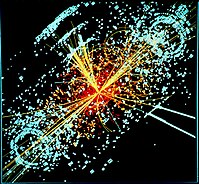Minimal Supersymmetric Standard Model

Okay kiddo, so let's talk about something called the minimal supersymmetric standard model - or MSSM for short.
Firstly, do you remember what atoms are made up of? Yes, protons, neutrons and electrons!
Now, inside protons and neutrons there are even smaller things called quarks. But we won't go into them today.
Instead, let's talk about particles that are even smaller than quarks - they're called elementary particles. These include things like photons (which make up light), electrons (which are part of atoms), and a whole load of other things like neutrinos and gluons.
Scientists have found that some of these particles have a property called 'spin'. This means that they behave like little spinning tops as they move through space.
The minimal supersymmetric standard model is a theory that tries to explain how some of these spinning particles interact with each other. It suggests that every particle has a 'superpartner' with the opposite spin. For example, the superpartner of an electron is called a selectron, and the superpartner of a photon is called a photino.
Now, the reason this theory is important is because it helps us to explain some mysteries of the universe. For example, why is gravity so weak compared to the other forces we see around us? And what happens at the very beginning of the universe, during the Big Bang?
The MSSM also predicts the existence of a new particle called the Higgs boson, which was finally discovered in 2012 at CERN in Switzerland. This discovery was a really big deal, because it confirmed that the MSSM is on the right track.
So, to sum up, the minimal supersymmetric standard model is a theory about spinning particles and their superpartners, and it helps scientists to answer some big questions about the universe!
Firstly, do you remember what atoms are made up of? Yes, protons, neutrons and electrons!
Now, inside protons and neutrons there are even smaller things called quarks. But we won't go into them today.
Instead, let's talk about particles that are even smaller than quarks - they're called elementary particles. These include things like photons (which make up light), electrons (which are part of atoms), and a whole load of other things like neutrinos and gluons.
Scientists have found that some of these particles have a property called 'spin'. This means that they behave like little spinning tops as they move through space.
The minimal supersymmetric standard model is a theory that tries to explain how some of these spinning particles interact with each other. It suggests that every particle has a 'superpartner' with the opposite spin. For example, the superpartner of an electron is called a selectron, and the superpartner of a photon is called a photino.
Now, the reason this theory is important is because it helps us to explain some mysteries of the universe. For example, why is gravity so weak compared to the other forces we see around us? And what happens at the very beginning of the universe, during the Big Bang?
The MSSM also predicts the existence of a new particle called the Higgs boson, which was finally discovered in 2012 at CERN in Switzerland. This discovery was a really big deal, because it confirmed that the MSSM is on the right track.
So, to sum up, the minimal supersymmetric standard model is a theory about spinning particles and their superpartners, and it helps scientists to answer some big questions about the universe!
Related topics others have asked about:
